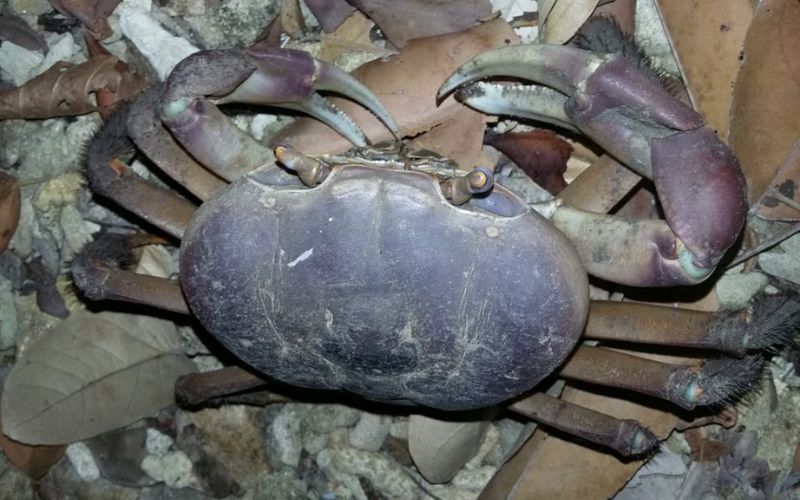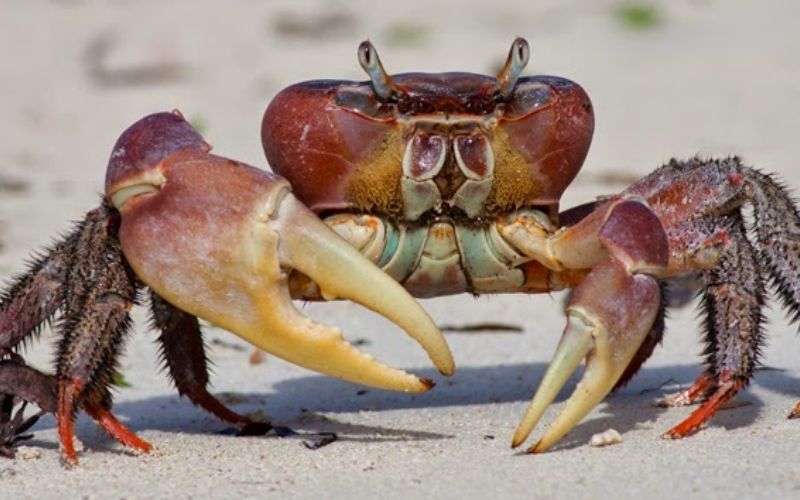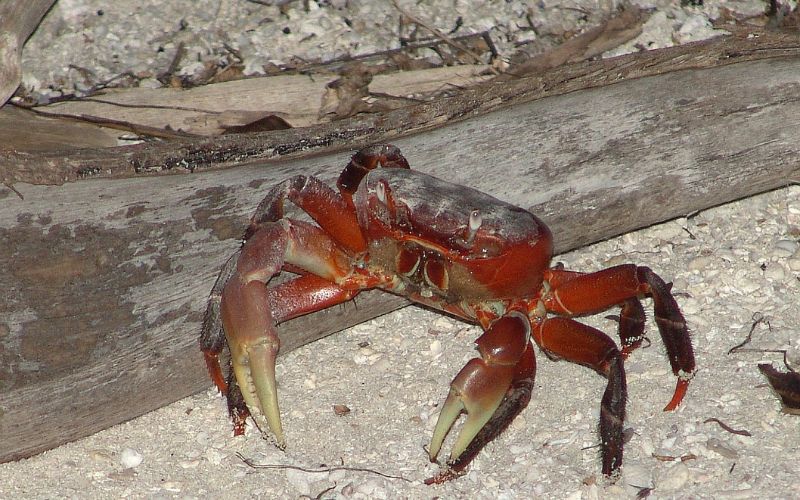The following article introduces a unique-looking crab with a very special name: the “Tank Crab.” To find out more about this fascinating creature and its characteristics, read on!
1 What is a Tank Crab?
The Tank Crab, with the scientific name Cardisoma carnifex, is a giant terrestrial crab belonging to the family Geocarcinidae. The genus name, Cardisoma, originates from the Latin words “cardi,” meaning heart, and “soma,” meaning body, reflecting the crab’s shell shape, which resembles a heart. This species is widely distributed across Africa, the Indo-Pacific region, and the island nation of Fiji. In Vietnam, it is considered a rare species, with its only known habitat in the country being the mangrove forests of Con Dao National Park.
 What is a Tank Crab?
What is a Tank Crab?
This crab has several alternative names, including Cardisomɑ obesum Dana, Cardisoma urvillei Milne Edwards, Perigrapsus excelsus Heller, and Cardisomɑ guanhumi var. carnifex Ortmann, among others. The people of Fiji once featured this rare crab on their postage stamps.
 Tank Crab Distribution
Tank Crab Distribution
The mangrove forests of Con Dao provide an ideal environment for these crabs, but they are notably absent from other Vietnamese mangrove areas such as Can Gio and Ca Mau. The reason for this remains a mystery to scientists. To unravel this enigma, comprehensive and multidisciplinary research is required, encompassing ocean currents, the crab’s food sources, ecology, genetics, and specific living conditions in the Con Dao region.
2 Characteristics of the Tank Crab
The Tank Crab, unknown to Vietnamese scientists until recently, earned its name due to its tank-like crawling movement. It is the largest crab species in Vietnam and the Indochinese Peninsula, with a carapace length exceeding 10 cm. The crab’s shell, or carapace, is a dark brown, chestnut-like color and is shaped like a heart. They possess large, powerful claws capable of tearing leaves and consuming vegetation. Omnivorous by nature, they dwell in burrows they excavate themselves, which can reach depths of 2 cm and diameters of 8-12 cm.
Despite their terrestrial habitat in the intertidal zone or sandy beaches, these crabs migrate to the sea to lay their eggs. The ocean provides stable water temperatures and an abundant food supply, creating an ideal environment for the development of their larvae.
 Characteristics of the Tank Crab
Characteristics of the Tank Crab
The crab’s life cycle includes five larval stages, with the initial phase lasting between 22 and 25 days, followed by the megalopal stage. During this period, they drift in the warm ocean waters until they develop into juvenile Tank Crabs, albeit with minuscule sizes of a few millimeters. The young crabs then return to the habitats of their ancestors. Given their extreme rarity, timely and effective conservation policies are essential to ensure the survival of this unique species.
This article has provided insight into the Tank Crab, a rare and fascinating creature. We hope you found this information valuable. Please visit our website regularly for more intriguing content.
Explore 12 Amazing Destinations for Biking Trips
Unlock Vietnam in a brand new way with an exciting biking tour! Discover the stunning beauty of the country with Dien May XANH’s top 12 must-see destinations. From sweeping plains to clear blue beaches and mountainous vistas – experience all the sights with your own personal cycling tour. Find your ideal route and set out for an adventure today!






































